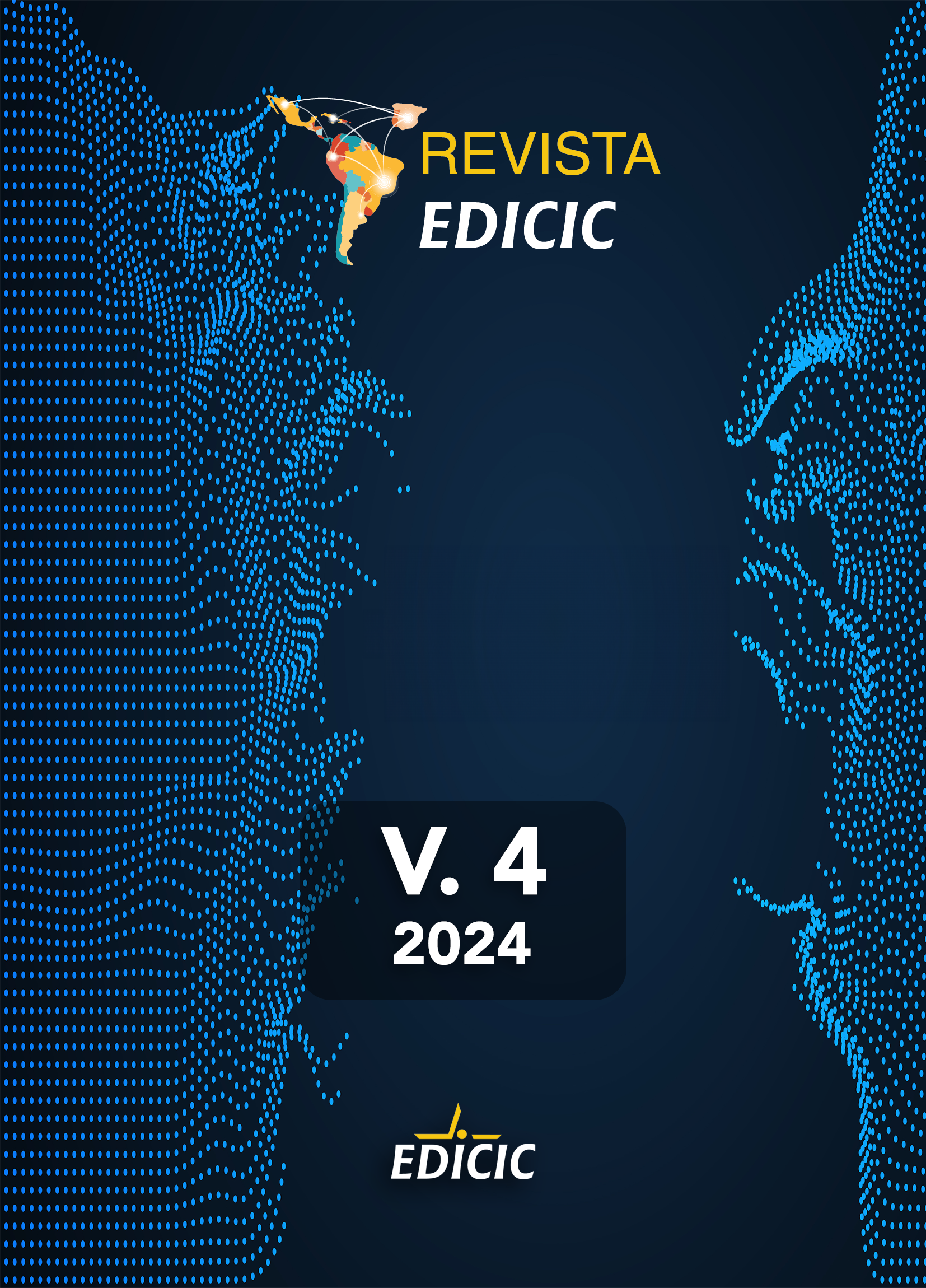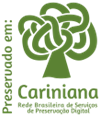Construction of digital capital in teachers in the framework of the digital divide
DOI:
https://doi.org/10.62758/re.v4.298Keywords:
Digital Capital, Digital Divide, Sociocultural ContextAbstract
The digital divide is a phenomenon that in recent years has been analyzed from various factors, such as economic, educational, and social. However, it is important to analyze the way in which the teacher builds his/her knowledge and approaches the use of technology based on the construction of his/her digital capital as a way to reduce the digital divide. To this end, the main objective of the research is to analyze the construction of teachers' digital capital based on their characteristics and sociocultural factors. The study is developed under a qualitative approach based on the socio-critical paradigm. The development of digital capital refers to the individual technological ecosystem that shapes and guides the way in which a user interacts with digital technologies based on the integration of cultural and social factors of people throughout their lives, allowing an association, a transferability and reproduction of knowledge. From the research it can be concluded that, for the participating teachers, sociocultural factors, and the development of social capital with close actors such as family and co-workers, generate states of confidence for learning about technology. The above allows the formation of digital capital that is more contextualized to your needs and resources that you can access.
References
Álvarez, C. (2008). La etnografía como modelo de investigación en educación. Gazeta de Antropología, 24(1), 1-15. https://digibug.ugr.es/handle/10481/6998 DOI: https://doi.org/10.30827/Digibug.6998
Bourdieu, P. (1979). La distinction. Critique sociale du jugement. Paris: Éditions du Minuit.
Bourdieu, P. (1986). The forms of capital, trans. Richard Nice, in Handbook of Theory and Research for the Sociology of Education, ed, John G. Richardson, New York: Greenwood, 241-258.
Bourdieu, P. (1990). The logic of practice. Cambridge: Polity. DOI: https://doi.org/10.1515/9781503621749
Bourdieu, P. (2002). Razones prácticas: sobre la teoría de la acción. Barcelona: Anagrama.
Bourdieu, P. & Wacquant, L. (2005). Una invitación a la sociología reflexiva. Buenos Aires: Siglo XXI
Calderón D (2021). La tercera brecha digital y Bourdieu: conversión bidireccional del capital económico, cultural y social hacia (y desde) capital digital entre los jóvenes de Madrid. Nuevos Medios y Sociedad, 23(9): 2534-2553. DOI: https://doi.org/10.1177/1461444820933252
Chisango, G., & Marongwe, N. (2021). The digital divide at three disadvantaged secondary schools in Gauteng, South Africa. Journal of Education (South Africa), 82, 149-165. https://doi.org/10.17159/2520-9868/i82a09 DOI: https://doi.org/10.17159/2520-9868/i82a09
Cortoni, I., & Perovic, J. (2020). Sociological analysis of Montenegrin teachers’ digital capital. Comunicação e Sociedade, 37, 169-184. https://journals.openedition.org/cs/2761?lang=en DOI: https://doi.org/10.17231/comsoc.37(2020).2397
Dávila- Rubio, C. A. ., & Castiblanco-Carrasco, R. A. (2023). Análisis de la brecha digital en profesores. Una aproximación desde la revisión de literatura. Sinergia Académica, 6(Especial), 1-26. https://doi.org/10.51736/sa.v6iEspecial.171 DOI: https://doi.org/10.51736/sa.v6iEspecial.171
Dávila Rubio, C. A., & Castiblanco-Carrasco, R. A. (2024). Factores socioculturales asociados a la brecha digital en docentes del sector público en Bogotá. Sociedad & Tecnología, 7(1), 1-17. https://doi.org/10.51247/st.v7i1.401 DOI: https://doi.org/10.51247/st.v7i1.401
De Alba González, M. (2010). La imagen como método en la construcción de significados sociales. Iztapalapa. Revista de Ciencias Sociales y Humanidades, (69), 41-65.
Leu, D. J., Kinzer, C. K., Coiro, J., Castek, J., Henry, L. A. (2017). Nuevas alfabetizaciones: una teoría de doble nivel sobre la naturaleza cambiante de la alfabetización, la instrucción y la evaluación. La Revista de Educación, 197 (2), 1-18.
Feenberg, A. (1991). Critical theory of technology. New York: Oxford University Press.
Feenberg, A. (2019). Postdigital or predigital? Postdigital Science and Education. https://doi-org.ezproxy.uniandes.edu.co/10.1007/s42438-018-0027-2. DOI: https://doi.org/10.1007/s42438-018-0027-2
Gómez Navarro, D. A., Alvarado López, R. A., Martínez Domínguez, M., & Díaz de León Castañeda, C. (2018). La brecha digital: una revisión conceptual y aportaciones metodológicas para su estudio en México. Entreciencias: Diálogos En La Sociedad Del Conocimiento, 6(16). https://doi.org/10.22201/enesl.20078064e.2018.16.62611 DOI: https://doi.org/10.22201/enesl.20078064e.2018.16.62611
Gladkova, A., Elena Vartanova, & Massimo Ragnedda. (2020). Digital divide and digital capital in multiethnic Russian society. Journal of Multicultural Discourses, 15(2), 126-147. doi:10.1080/17447143.2020.1745212. DOI: https://doi.org/10.1080/17447143.2020.1745212
Gonzales, A. (2016) La brecha digital contemporánea en Estados Unidos: desde el acceso inicial al mantenimiento de la tecnología. Información, comunicación y sociedad 19(2), 234-48.
Hernández Sampieri, R., Fernández Collado, C. & BaptistaLucio, P. (2014). Metodología de la investigación (6a. ed.). México D.F.: McGraw-Hill.
Ibáñez Salgado, N. (2020). La orientación etnográfica en el diseño metodológico de una investigación educacional. En: J. A. y A. Valdivia (Ed.) Lo cotidiano en la escuela. 40 años de etnografía escolar.(pp.239-254). Editorial universitaria. https://www.researchgate.net/publication/345087513_La_orientacion_etnografica_en_el_diseno_metodologico_de_una_investigacion_educacional
Lybeck, R., Koiranen, L., & Koivula, A. (2023). From digital divide to digital capital: The role of education and digital skills in social media participation. Univers. Access Inf. Soc., 1-13. DOI: https://doi.org/10.1007/s10209-022-00961-0
Merisalo, M., & Makkonen, T. (2022). Bourdieusian e-capital perspective enhancing digital capital discussion in the realm of third level digital divide. Information Technology & People, 35(8), 231-252. https://doi.org/10.1108/ITP-08-2021-0594 DOI: https://doi.org/10.1108/ITP-08-2021-0594
Ministerio de Tecnologías de la Información y Comunicaciones de Colombia. (2022). Índice de brecha digital. Resultados 2021. https://colombiatic.mintic.gov.co/679/articles-238353_recurso_1.pdf
Newlin, M. (2018). Technophobia: Understanding computer anxiety for teaching and learning of computer studies. Journal of Communication, 09, 11-23. https://doi.org/10.31901/24566586.2018/09.1-2.231 DOI: https://doi.org/10.31901/24566586.2018/09.1-2.231
Park, S. (2017). Digital capital. Palgrave Macmillan. https://doi.org/10.1057/978-1-137-59332-0 DOI: https://doi.org/10.1057/978-1-137-59332-0
Philipsen, B. (2019). A professional development process model for online and blended learning: Introducing digital capital. Contemporary Issues in Technology and Teacher Education, 19(4). https://citejournal.org/volume-19/issue-4-19/current-practice/a-professional-development-process-model-for-online-and-blended-learning-introducing-digital-capital
Putnam, R. (2000). Bowling alone: America’s declining social capital. Simon & Schuster. DOI: https://doi.org/10.1007/978-1-349-62397-6_12
Ragnedda, M. (2017). The third digital divide: A weberian approach to digital inequalities. New York: Routledge. DOI: https://doi.org/10.4324/9781315606002
Ragnedda, M. (2018), Conceptualizando el capital digital. Telemática e Informática, 35(8), 23662375 DOI: https://doi.org/10.1016/j.tele.2018.10.006
Ragnedda, M., & Ruiu, M. (2020). Digital capital: A Bourdieusian perspective on the digital divide. Emerald Publishing Limited. DOI: https://doi.org/10.1108/9781839095504
Ragnedda, M., Ruiu, M. L., Addeo, F., & Delli Paoli, A. (2022). Converting digital capital in five key life realms. Italian Sociological Review, 12(1), 19-40. http://dx.doi.org/10.13136/isr.v12i1.517
Reisdorf, B., & Groselj, D. (2017). Internet (non-)use types and motivational access: Implications for digital inequalities research. New Media & Society, 19(8), 1157-1176. https://doi.org/10.1177/1461444815621539 DOI: https://doi.org/10.1177/1461444815621539
Ritzer, G., Dean, P., & Jurgenson, N. (2012). The coming of age of the prosumer. The American Behavioral Scientist (Beverly Hills), 56(4), 379-398. https://doi.org/10.1177/0002764211429368 DOI: https://doi.org/10.1177/0002764211429368
Robinson, L., Cotton, S. R., Ono, H., Quan-Haase, A., Mesch, G., Chen, W., & Stern, M. J. (2015). Digital inequalities and why they matter. Information, Communication & Society, 18(5), 569-582. DOI: https://doi.org/10.1080/1369118X.2015.1012532
Rogers, E. M., Singhal, A., & Quinlan, M. M. (2014). Diffusion of innovations. In An integrated approach to communication theory and research. Routledge. pp.432-448.
RubioArostegui, J., Pecourt, J., & RiusUlldemolins, J. (2017). Usos y abusos de la creatividad. Sociología de los procesos creativos, transiciones al entorno digital y políticas creativas. Debates. Revista de Cultura, Poder i Societat, 130(2). https:// doi.org/10.28939/iam.debats.1302.11 DOI: https://doi.org/10.28939/iam.debats.130-2.7
Seale, J. (2013). When digital capital is not enough: Reconsidering the digital lives of disabled university students. Learning, Media and Technology, 38(3), 256-269. 10.1080/17439884.2012.670644 DOI: https://doi.org/10.1080/17439884.2012.670644
Selwyn, N. (2004). Reconsidering political and popular understandings of the digital divide. New Media and Society, 6(3), 341-362. https://doi.org/10.1177/1461444804042519 DOI: https://doi.org/10.1177/1461444804042519
Tula Molina, F., & Giuliano, H. G. (2015). La teoría crítica de la tecnología: revisión de conceptos. Redes, 21(41), 179-214
Van Deursen A.; Van Dijk J. (2015). Hacia un modelo multifacético de acceso a Internet para comprender las brechas digitales: una investigación empírica. La Sociedad de la Información, 31(5): 379-391
Van Deursen, A., & Helsper, Ellen J., (2015). The third-level digital divide: Who benefits most from being online? Communication and Information Technologies, Annual, 10, pp.29-52. DOI: https://doi.org/10.1108/S2050-206020150000010002
Van Dijk, J. A. G. M. (2013). A theory of the digital divide. In Routledge advances in sociology (73rd ed., pp.29–51).
Van Dijk JA. (2017). Digital divide: Impact of access impact of access. The International Encyclopedia of Media Effects, pp.1-11. https://doi.org/10.1002/9781118783764.wbieme0043 DOI: https://doi.org/10.1002/9781118783764.wbieme0043
Ventrella, F. M., & Cotnam-Kappel, M. (2024). Examining digital capital and digital inequalities in Canadian elementary schools: Insights from teachers. Telematics and Informatics, 86, 102070. https://doi.org/10.1016/j.tele.2023.102070 DOI: https://doi.org/10.1016/j.tele.2023.102070
Downloads
Published
How to Cite
Issue
Section
License
Copyright (c) 2024 Revista EDICIC

This work is licensed under a Creative Commons Attribution 4.0 International License.
The Association holds the copyright of the texts it publishes and, therefore, adopts a Creative Commons License, CC BY 4.0 DEED Attribution 4.0 International (https://creativecommons.org/
You are free to:
- Share: copy and redistribute the material in any medium or format for any purpose, even commercially.
- Adapt: remix, transform, and build upon the material for any purpose, even commercially.






